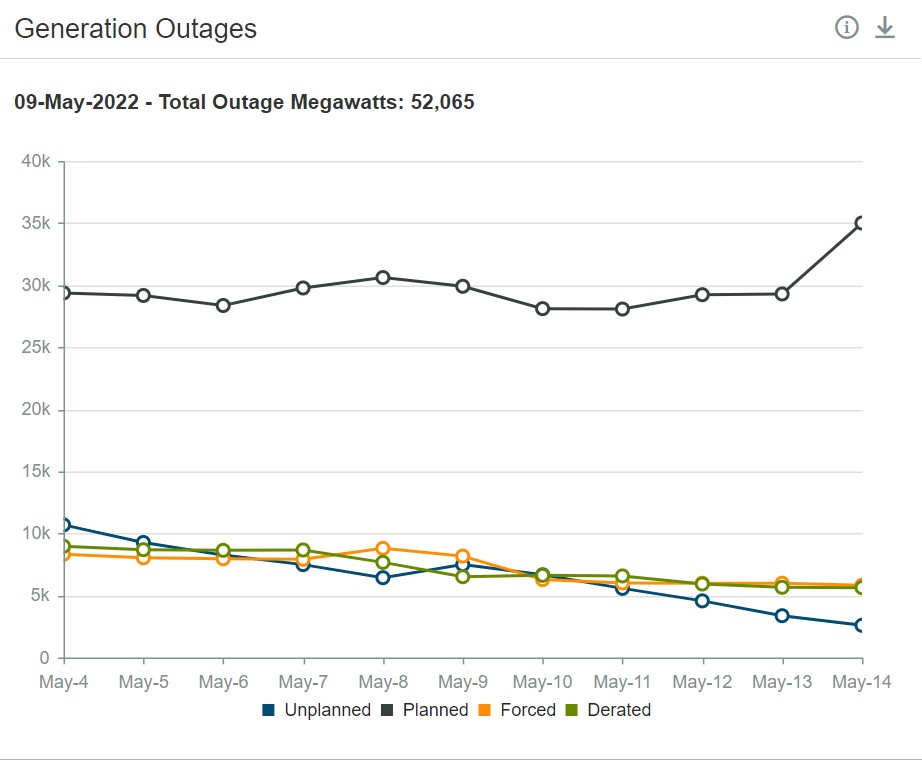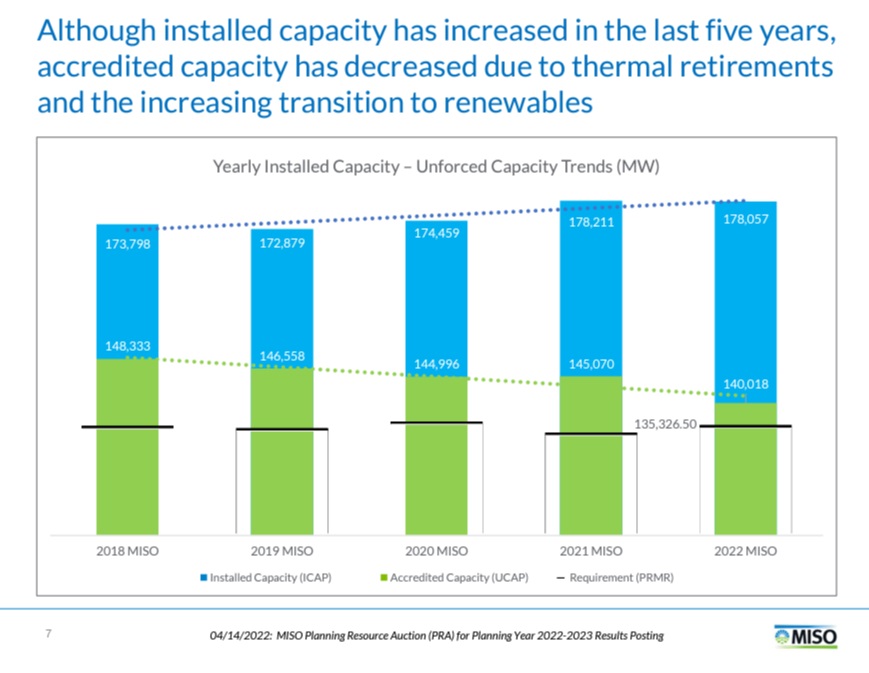Heat, plant maintenance, and lack of reliable power plants could strain the electric grid this week
A combination of unseasonably warm temperatures, plant maintenance, and a shortage of reliable power plant capacity on the electric grid could lead to a strain on the electricity system this week.
Temperatures are forecast to be higher than normal for this time of year, with the mercury climbing to the high 80s and 90s for much of the central United States, according to the National Oceanic and Atmospheric Administration.

The geographically widespread occurrence of unseasonably warm temperatures will likely drive up the demand for electricity for air conditioning, and potentially reduce the amount of electricity that other regional grid operators will have available for export.
April and May are typically months with low electricity demand because it is warm enough to reduce the need for electric heating, but not so warm that it prompts people to fire up their air conditioners. As a result, these months are when power plant operators usually power down some of their equipment for scheduled maintenance and repairs.
According to the Midcontinent Independent Systems Operator (MISO) website, there will be 44,000 megawatts of power plants that are not available to produce power — which is referred to as a plant on outage — on May 11 and 12, when temperatures are expected to peak. For context, the state of Illinois has 44,250 MW of installed capacity, according to the U.S. Energy Information Administration.

The high temperatures and high levels of unit outages will potentially challenge a MISO grid that already doesn’t have enough reliable power plant capacity in its system to meet its anticipated peak demand plus a margin of safety, increasing the risk of blackouts.
The capacity shortfall is the result of reliable power plants, mostly coal and nuclear plants, retiring and being replaced by wind turbines and solar facilities that aren’t nearly as reliable.
The graph below from a slideshow released by MISO shows the installed capacity (ICAP) of power plants on the MISO system increasing, but accredited capacity (UCAP), or the amount that is considered reliable, falling every year. In layman’s terms, the amount of reliable power plant capacity on the grid is declining, even though we are building a lot more wind and solar.

During a recent call, MISO representatives said that the regional grid would be reliant upon non-firm imports of electricity, likely from an eastern electric grid called PJM, to keep the lights on this summer.
If PJM, which includes parts of Delaware, Illinois, Indiana, Kentucky, Maryland, Michigan, New Jersey, North Carolina, Ohio, Pennsylvania, Tennessee, Virginia, West Virginia, and the District of Columbia, also has abnormally warm weather and a high number of units on outage, then we could be in a tight spot in MISO.
The other major factor affecting the reliability of the grid this week will be wind output. If wind generation is strong, then we will have enough juice to keep the lights on, but this is no guarantee, as wind production often drops as temperatures soar.
At noon on June 10, 2021, the wind was producing just 7.7 percent of its potential output, according to Energy Information Administration data. This total is about half of the capacity accreditation of 15 percent given to wind turbines.
Any resource can underperform its capacity accreditation based on the circumstances, but underperformance for wind and solar is a feature, not a bug, which is why we call capacity accreditations for wind and solar “phantom firm” resources. Maybe they will produce at this level, but maybe they won’t.
Time will tell if MISO has problems keeping the lights on this week, but gambling on the grid by hoping for wind is no way to live.